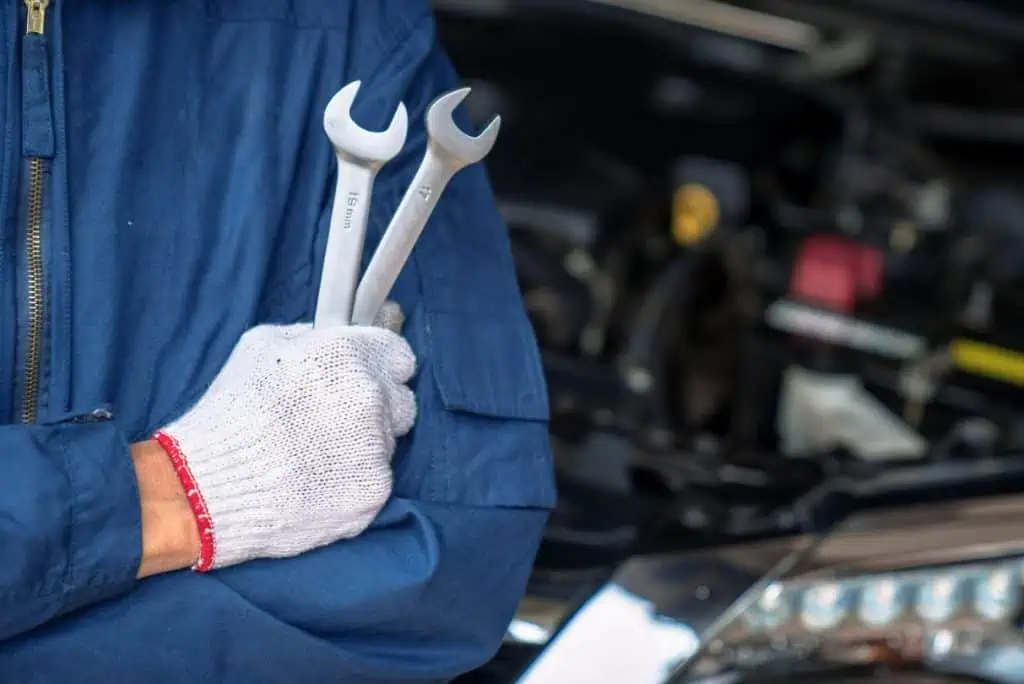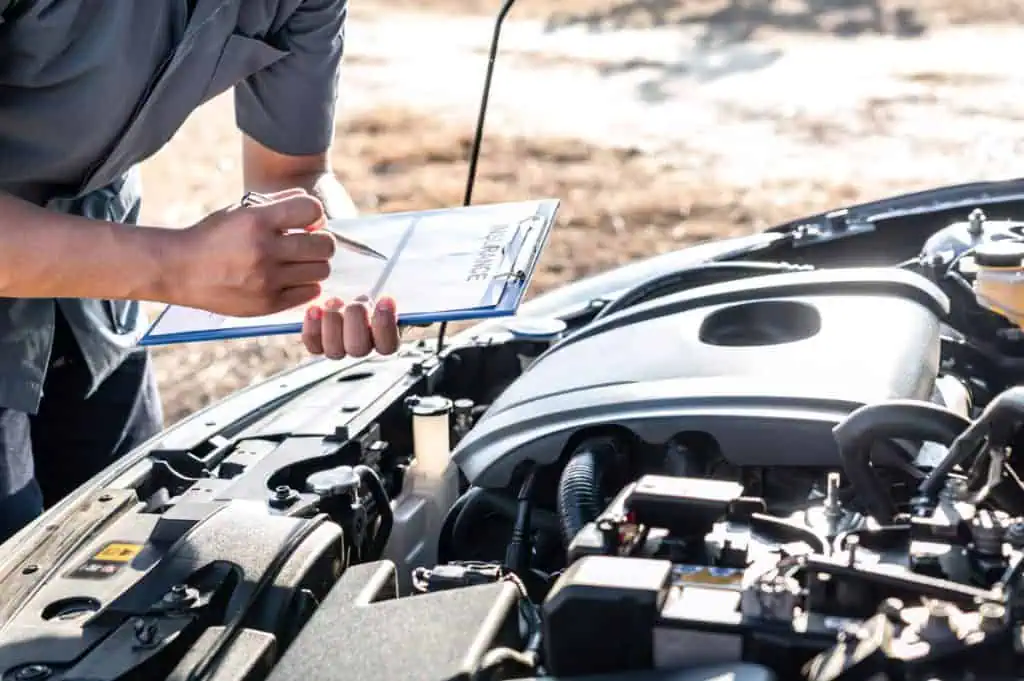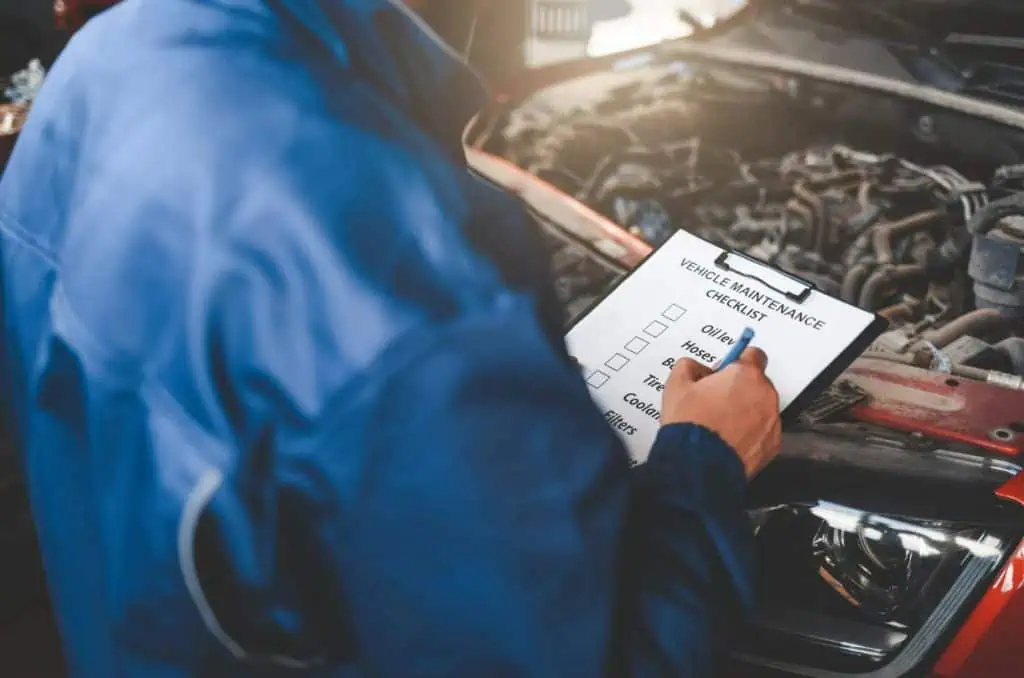Verizon’s 2024 Fleet Technology Trends Survey found increased costs are the biggest challenge of fleet maintenance 69% of businesses face.
Table of Contents
When you’re in business that operates a fleet you have to manage expenses from fuel consumption to labor costs, and repairs often without compromising safety- a tough balancing act. But should it be like this for small businesses?
Of course not. It’s possible to operate a fleet at low costs if there’s a plan to extend the life cycle of your organization’s vehicle. Operating a fleet that doesn’t malfunction often or becomes outdated quickly saves you costly and untimely repairs or replacements.

The question you’re likely asking yourself is what does a low cost fleet maintenance plan include? Knowing the financial aspects of car ownership through a cost analysis. You must also make your fleet fuel efficient, focus on preventative maintenance, and upgrade outdated cars.
In this post, we’ll walk through these tips to reduce vehicle maintenance costs and make your fleet upkeep experience easy and cost-effective.

Analyze Vehicle Ownership Costs
A business can’t control fleet expenses if it hasn’t calculated what it spends. Therefore, do a cost analysis of fleet ownership, including the amount spent per mile for each vehicle. A fleet cost assessment will determine how money is being spent when operating company cars and where you can save more to improve profit margins.
Plus, evaluating long-term cost of company fleet operations offers clarity on whether you’re getting a return on investment or not. It reveals how much is being spent to pay driver salaries, insurance, repairs, fuel, and other similar expenses.
You can then use a fleet management software to assess if each expense is worth investing in or which ones should be eliminated. So, how do you calculate the total ownership cost of a fleet?
Get the sum of fixed costs (car purchasing payments, insurance, license, and depreciation) and variable costs (vehicle maintenance, driver training, fuel, and accident fines). You can put this as $90,000 (fixed expenses) + $50,000 (variables), for example.
Your total cost of ownership (TCO) will be $140,000. After calculating the total ownership cost, do the math for cost per mile of your fleet. This is done by dividing the TCO with the miles driven.
For instance, if the TCO is $140,000 and miles driven are 100,000 you get $1.4 as the expense per mile. Calculating TCO and price per mile makes future expenses easy to predict so you can budget wisely.
Maximize Fuel Efficiency
A survey by the American Transportation Research Institute found fuel costs increased by approximately 54% in 2022, compared to driver wages, which rose by only 15.5%. Gas remains the biggest fleet expense and making fuel efficiency a priority can help minimize fleet operational costs.
This goal can be achieved through vehicle selection based on low gas usage and higher mileage or range. You could buy crossovers with the best ratings on combined miles per gallon (mpg), for instance.
A vehicle with higher combined MPG is fuel-efficient during a journey, ensuring you spend less on petrol, diesel, or even electricity. Plus, opting for smaller vehicles, like crossovers, SUVs, and minivans means less wear and tear because they aren’t required to haul heavy equipment often.
However, if your daily transportation requires the use of pickup trucks or trailers, don’t limit your car options to smaller models only. A good starting point to make informed decisions entails checking if your staff needs the cargo power or hauling capacity pickups or trailers offer.
Besides rightsizing your fleet with your company’s transportation needs, encourage good driving behavior. Train drivers to follow efficient driving tricks like avoiding unnecessary engine idling, maintaining smooth acceleration speed, and reducing sudden starts and stops.
Monitor Tire Pressure Regularly
Tires cause the most unexpected downtime during transit. They could blow-out if they have too much or less pressure. And have higher friction, leading to premature wear and tear. This adds to your service expenses, lower productivity, and puts the safety of drivers, passengers, and other road users at risk.
When vehicle tires are underperforming you’ll also notice high consumption of fuel, which translates to more spending on the pump. There’s one simple but effective technique to keep maintenance cost of the fleet low: monitor tire pressure and functionality.
Set up a tire inspection routine program that involves checking for signs of damage (wear and tear), tread depth, and correct inflation. Today’s cars have a tire pressure monitoring system (TPMS) that notifies drivers about tire health.
Use this system to keep tires maintained and inflated, which translates to an extended lifespan, eliminating frequent replacements. Also, when business vehicles have tires with the correct pressure, they consume less fuel and offer better mileage that equals minimal operational expenses.
Emphasize On Driver Safety And Compliance
Risks of road accidents, violations, or unsafe driving practices reduce an organization’s profits through paying compensation (legal penalties) and a damaged reputation. Your organization can do several things to include safe and efficient driving in its fleet policies and culture.
This entails training drivers safety habits that reduce strain on your commercial vehicles and lower maintenance expenses. For instance, providing training programs focused on eliminating bad habits like harsh braking can prevent tires from wearing out and damage your drive shaft.
Such damages often increase repair costs and overall maintenance expenses. Training that discourages speeding or engine idling maximizes fuel economy, thus cutting costs. Apart from training, small businesses can introduce fleet management systems that monitor driver behavior in real-time.
Then give drivers feedback immediately to help them adjust their behavior like reduce speeding on the road to minimize collision risks. Safe driving practices also reduce accident rates, preventing costly fines, legal procedures, and insurance payouts.
On compliance, review commercial driver’s license requirements in each state you operate in. By complying with licensing regulations, you avoid penalties that add to your operational costs. Also, check tax deductions for fleet purchasing, as it can help cut upfront expenses.
Vehicle Parts Inventory Optimization
Stocking essential car parts ready for fleet repairs might not cross your mind as a strategy for reducing costs linked to maintenance. But you could save your small business money by optimizing your parts inventory and stocking them in your office.
This way you can have cars repaired quickly without overspending on rush orders and expensive repairs. The downside to this practice is overstocking parts which might not be used, hence become obsolete and tie up the company’s capital.
Fortunately, fleet management tools can help identify parts you use frequently for business car repairs. You can then stock the right parts and ensure vehicles don’t stay out of service for a long time, waiting for spare parts. Another reason to optimize your parts inventory is prompt and correct vehicle repairs, which promotes safety and reliability.
Adopt Preventative Maintenance Practices
Reactive maintenance sounds perfect until your company’s fleet budget goes overboard. So, instead of waiting for your business cars to break down and fix them, why not practice preventative maintenance?
This tactic involves scheduled inspections and servicing to pinpoint potential mechanical problems. Then repair mechanical or technical malfunctions before they become problematic and more costly.
Note, scheduled routine checks focus on vital automobile components, such as brakes, engines, tires, and fluids. Inspecting brakes and engines regularly allows mechanics to spot worn-out parts or detect the need for an oil change, for example.
When worn-out brake parts are replaced or engine oil is topped up, costly problems like engine failure or brake damage are avoided. At first, preventative maintenance sounds costly, but it prevents expensive emergency repairs and reduced downtime.

Develop A Fleet Replacement And Disposal Schedule
Being cautious with maintenance will prolong the life of your vehicles. But over time, your fleet will wear out and cost you more to maintain. Ideally, an old truck will require frequent spare part replacement or expensive repairs, which costs more than replacing it with a new one.
When one or two of your company’s vehicles are not working, you experience delays in delivery services. Therefore, create a vehicle replacement and disposal plan so it’s easier to know when it’s time to scrap off an outdated fleet and buy a new one.
Having a customized disposal and replacement schedule for business vehicles will help save big on maintenance if you have a request form for upgrading old vehicles. In this form, fleet operators or managers should communicate clearly the reason for replacing a vehicle and the model that’s desired for business transportation.
Doing this gives you, the business owner, full control of the vehicle replacement decision to stick to a budget. You’ll be able to do a cost analysis, research fuel-efficient vehicles, and avoid potential discrepancies.
This reduces excessive replacements when maintenance repairs could have improved the vehicles’ functionality. In your business’s vehicle replacement and disposal plan, have an approval process.
Decide how beneficial replacing vehicles in your fleet is and the lead times for purchasing. Then communicate with your team and find a solution to dispose or resell the outdated car.
Reduce Vehicle Maintenance Costs Now
Maintaining a functional fleet for a small business is overwhelming. It involves balancing a budget that accounts for vehicle upkeep that may hurt profit margins if you don’t balance fuel expenses, repairs, insurance, and other vehicle-related costs properly.
As an entrepreneur, you need clear knowledge of the total ownership cost of your fleet so you can forecast future costs and budget well. Other considerations include training habits that support fuel efficiency, improving safety and compliance, updating your fleet, and fostering preventative maintenance practices.



